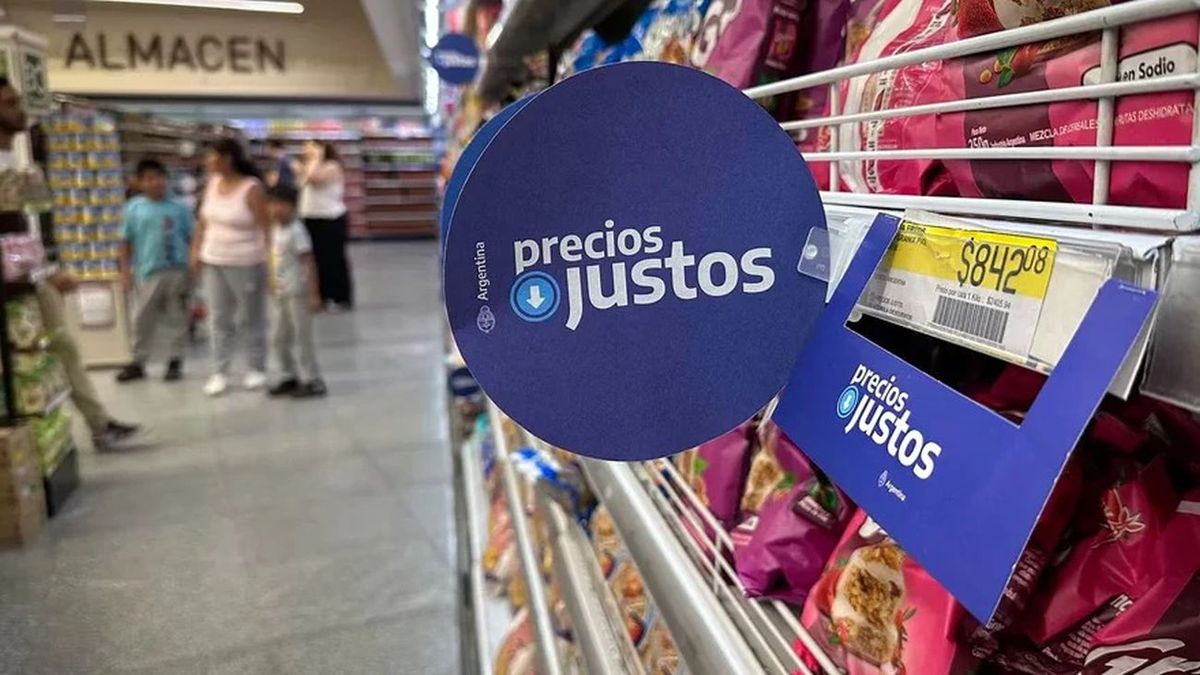At the beginning of June, the Commerce secretary launched the “Fair Neighborhood Prices”, an agreement that establishes the list prices of more than 100 products of massive consume, so that local stores and supermarkets can offer these items at a more accessible value. And, thus, shorten the existing gap with the large chains.
As reported by the Government, it is a “voluntary price agreement between the National State, supermarkets wholesalers, dealers and consumer goods companies. Last week, a “follow-up” meeting was held at the Ministry of Commerce to “evaluate how to improve the program”especially with regard to inspection in wholesalers, according to what they pointed out to Ambit from the wallet.
There, representatives of nearby businesses stated that some wholesalers do not comply with the agreement. Although, in any case, they remarked that the possibility of offering prices more competitive on some items “pulls” consumption.
About, fernando savorepresident of the Federation of Storekeepers of the province of Buenos Aires (FABA), explained that “90% of the purchase of the merchandise we have to do it in the wholesalers and the wholesalers are not accompanying us in that”.
“We go to the wholesaler to buy what we need, we do it with little time, but the merchandise is not marked. excepting a single string where, within everything, the merchandise is and is marked. The others do not accompany. That is the serious problem we are having now,” Savore told Ámbito.
In addition, the merchant stressed that in many cases the supplier companies “do not supply the wholesaler either.” “The anger is that we are talking about just 100 items, when in a wholesaler there must be 12,000 products. They should accompany This is what we are proposing to the Secretary of Commerce,” he said.
In any case, beyond the questions, Savore highlighted that the possibility of offering products at competitive prices drives sales: “Among the 100 products that make up the program, there are 10 or 12 that are ‘stars’. For example: an oil, to sell at $373 seduces the client, pulls, and the client comes looking for him. A rice that can be sold for $341 makes people come. Those are the products that matter.”
“As long as you can set good prices, people will come. For example: right now, the most powerful tool we have is a DNI account. The 30% discount with a cap of $2,200, are days that we double the sale of a weekday”, remarked the head of FABA.
And he stressed: “When they give us tools, we make them count, because we need them. Some large company can hide the merchandise, because it knows that it will increase and it will earn more money. We can’t do that, we need to generate the box every day. That is why we fight for Fair Prices to reach our businesses. This program must be defended and that is why we take our concerns to the Ministry of Commerce”.
In any case, Savore remarked that the situation is complex: “The sale is complicated, but it is inflation that we have against. It becomes difficult to manage costs, when you bought at a price, you sold and when you go to replenish, the merchandise went up”.
Inflation, he concluded, plays a key factor: “Because every month it erodes the worker’s salary. But, on the other hand, what we see is that people no longer buy cash in a supermarket, because to fill a little monkey we have to talk about $80,000. People deal with day to day and they don’t do that in a hyper”.
Consumption
Fair Prices
Merchants assure that Fair Neighborhood Prices help drive consumption
Mariano Fuchila
Until May, prior to the launch of the Neighborhood Fair Prices, the consumption gap between small local businesses and large supermarket chains continued to grow. This was reflected in the latest report from the consulting firm Scentia.
“The difference in behavior between channels continues to be very noticeable, given that theSelf-services fell 12.4% and Supermarkets remained positive (+7.8%), although with a slight slowdown”, the study detailed, in which it was underlined: “The difference from what happened in Self-Services in the reported areas is very marked, since in AMBA the fall is very noticeable. On the other hand, in Supermarkets the situation is more balanced”.
In fact, according to data released by the firm, independent supermarkets accumulate a fall of 9.2% so far this year throughout the country, while in the AMBA, the retraction is even more marked: it reaches 15.5%.
On the other hand, the big chains add an improvement of 8.4% in general in the first five months of the year, with similar evolutions both in the AMBA and in the interior of the country.
The reason for this difference lay in the price gap between the different channels, motivated by the scope of the different government programs. With the launch of Precios Justos Barriales, an attempt was made, precisely, to reduce that difference.
Source: Ambito




